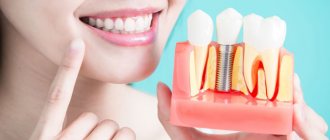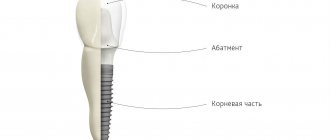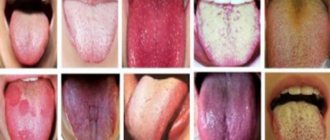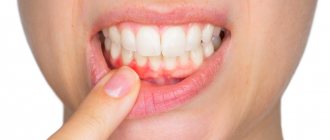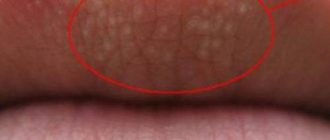The younger the child, the more often he experiences such a symptom as swelling of the upper or lower eyelid . Regardless of the reasons, such a disorder always looks very noticeable, since in children, due to their physiological characteristics, swelling is more pronounced.
Typically, this phenomenon is often observed in the morning after sleep and this swelling should not cause cause for concern.
But it is worth paying attention to the accompanying symptoms and the time during which the swelling does not go away.
Attention! Perhaps this is a sign of some kind of disease, which may not necessarily relate to ophthalmology, but also extends to internal organs.
Symptoms of swelling of the eyes and eyelids in a child
If eye swelling is pathological , in addition to this symptom itself, additional symptoms will be present
- the appearance of purulent discharge from the eyes ;
- increased lacrimation;
- development of seals in the tissues of the eyelids ;
- possible increase in body temperature.
If such symptoms appear, it is not recommended to self-medicate and use medications without first consulting a doctor.
It is necessary to visit a pediatrician and ophthalmologist , who will help determine the cause of the development of swelling and formulate a course of treatment.
Signs of eruption of eye teeth
The main signs of teething include:
- lacrimation, often developing into conjunctivitis;
- swelling and redness of the gums, when touched the child begins to cry;
- runny nose (if it is not transparent, but green or yellow, then there is an infection in the child’s body);
- an increase in temperature (if it exceeds 38 degrees, you should urgently consult a doctor, as this may be a signal that more serious diseases are beginning to develop);
- itching in the gums, due to which the baby tries to put everything that is at hand in his mouth.
Moreover, against the background of eruption of eye teeth, not only conjunctivitis can occur, but also a number of other specific diseases, often infectious, since immunity is reduced. You can make sure that these diseases are associated with teething only after consulting a doctor and receiving test results.
Causes of pathology
Keep in mind! There are dozens of reasons why children's eyelids swell, and not all of these reasons indicate ophthalmological diseases.
Among the pathological causes, the most common diseases and disorders can be identified:
- helminthic infestations;
- purulent or membranous conjunctivitis;
- subcutaneous emphysema;
- endophthalmitis;
- keratitis;
- iridocyclitis;
- hypothyroidism;
- abscess of the eyelid;
- demodicosis
In addition to these and other ophthalmological diseases, swelling can serve as an indirect confirmation of diseases such as acute respiratory infections, ARVI, sore throat, influenza, allergic reactions, vegetative-vascular dystonia, increased intracranial pressure, hormonal disorders .
It is worth distinguishing these causes from non-pathological ones , for which medical attention is not required.
These include swelling that occurs due to an awkward position of the head during sleep, prolonged exposure to sunlight, long-term use of antibiotics and congenital anatomical disorders of the eyelids.
Separately, it is worth highlighting injuries to the organs of vision , which can cause severe swelling.
Swelling of the upper and lower eyelids
In general, the causes and signs of swelling of the upper and lower eyelids are the same , but there are several reasons why the skin swells above or below the eye.
It is worth noting! A swollen upper eyelid may indicate the following disorders:
- accumulation in the subcutaneous layer of adipose tissue;
- diseases of the digestive system;
- general or chronic pathologies of the kidneys or heart;
- manifestation of allergic reactions;
- oncological formations.
By the swelling of the lower eyelid one can judge the presence of non-inflammatory pathologies.
If such a symptom most often occurs in the morning, it is worth checking the child for diseases of the kidneys, cardiovascular system and thyroid gland.
Swelling accompanied by fever
Sometimes swelling of the eyelids is accompanied by other clearly visible symptoms.
One of which is a slight or significant increase in body temperature .
If at the same time the child notices increased lacrimation, urination problems and headaches, the cause may be one of the following ailments :
- heart pathologies (in this case, swelling appears more in the evening than in the morning);
- renal dysfunction;
- diseases of the lymphatic and venous system;
- sinusitis;
- rhinitis;
- sinusitis;
- liver diseases;
- dysfunction of the thyroid gland;
- one of the types of allergic reactions, including angioedema.
Remember! Also, with such a symptom, there is a possibility of serious diseases in which intracranial pressure increases.
TEAR OR PUS IN A BABY'S EYE: SOUND THE ALARM!
25.11.2019
The appearance of purulent discharge in a baby’s eyes is always unpleasant and indicates health problems. However, is it worth taking your child to the doctor or is it just a minor nuisance like a cold that will “go away on its own”? Igor Aznauryan, ophthalmic surgeon, Doctor of Medical Sciences, professor, founder of the Yasny Vzor children's eye clinics, will tell you what modern ophthalmology offers to solve this problem.
Eye suppuration in infants: causes and symptoms
Obstruction of the nasolacrimal duct first appears in a newborn. In our body, the lacrimal drainage system is arranged as follows: the lacrimal canaliculi pass into the lacrimal sac, then into the nasolacrimal duct, which opens into the nasal cavity. That is, normally tears enter the nose through the system of these tubes. During intrauterine development, this passage is closed by a membrane, which should dissolve at approximately 8-9 months of pregnancy. However, sometimes it does not resolve, the passage in the newborn remains closed, and, as a result, the tear, instead of washing the eye and going into the nose, remains in the eye cavity and flows out.
Dirt and dust get into this tear, and with them microbes that begin to actively multiply. Everything that should be washed off and gone into the nose remains in the eye. This leads to inflammation, that is, conjunctivitis, most often bacterial. This is how suppuration of the eyes appears. With normal patency of the duct, after instillation of antibacterial or antiseptic drops, the inflammation goes away. However, in case of obstruction, as soon as the mother stops dripping drops, the eyes begin to fester again. Obstruction of the nasolacrimal duct due to the presence of unresolved membrane and the resulting suppuration of the eyes is called dacryocystitis of newborns.
Sometimes the disease occurs immediately after birth, sometimes after a few months, when tear production begins to become more active. But most often, a child’s eyes begin to fester about two weeks after birth.
What should parents do?
It is best to immediately contact a pediatric ophthalmologist. He will prescribe drops and show the massage technique, because sometimes there is no patency not due to the presence of a membrane, but simply because the lacrimal ducts are clogged with a mucus plug that appeared there during the period of intrauterine development. In this case, massage is indicated. It will help push out the mucus plug so that the tear ducts are cleared, become passable, and tears can escape into the nose.
However, in the case of a membrane, massage will not remove it; it can only alleviate the child’s condition in the first two weeks. But if after a course of massage it has not changed, then you are dealing with obstruction due to the fault of the membrane. In this case, the useless massage should be stopped and the eye should be kept clean with drops before probing.
Sensing: what is it and why is it necessary?
It is performed in 3-4 months, because... Before this, the mucous membrane is very tender and easily injured. By this age, it becomes completely clear that we are dealing with true obstruction of the nasolacrimal duct, and the disease will not go away on its own.
Sounding is carried out under medicated sleep conditions, when the child breathes through a mask. It is safe, painless and fairly quick (the procedure lasts about 10 minutes). First, the doctor confirms the obstruction during a consultation, then the child is taken to the hospital after he has been examined by an ENT specialist, a pediatrician, and a cardiologist. The ENT specialist is a key figure because he must determine whether there are any barriers to tears from the nose. If they are not there, then the child in the hospital is put to sleep, probing is performed, and after two hours the baby can go home.
The essence of probing is that the doctor uses a metal probe to pass through the tear outflow path. That is, the lacrimal canaliculi, lacrimal sac, lacrimal duct, and completes the procedure in the nose. A small child has a very thin mucous membrane; these channels have a complex structure: many bends and valves, expansions and contractions. That is why it is fundamentally important to do this in medicated sleep, when the child does not feel anything, does not scream or disturb the doctor. In modern medicine, treating children by force, by holding them down, is simply unacceptable - this is a huge stress, and besides, the doctor cannot carry out the procedure quickly and efficiently while the child is desperately struggling. Medication-induced sleep helps to avoid complications, rupture of canal walls, fracture of bone walls, formation of false passages and fistulas.
After the procedure, its effectiveness is checked using contrast. The dye is supplied through the lacrimal openings, which should enter the nose. Dye in the nose shows that patency has been restored.
Sometimes it happens that the lacrimal canal is not formed at all; in principle, it does not exist anatomically. In this case, the doctor will not be able to help with probing, but after this procedure he will tell the parents what to do. Most often, stenting or dacryocystorhinostomy surgery to form canals is indicated. It can be performed from 4-6 months, endscopically, i.e. without scars or scars.
Repeated probing and complications
Sometimes, when probing is carried out without medicated sleep, the baby goes through the procedure 3-4 times, but there is still no point. This means that complications have already developed. For example, the probe did not go into the nose, but into the soft tissue of the cheek. The result is false passages, pockets where pus and bacteria accumulate, and the formation of fistulas is possible.
In fact, the risks of unsuccessful probing or delaying this procedure are very high - a constant purulent process occurs next to the eye on the child’s face. The infection can spread to adjacent tissues and through the bloodstream throughout the body.
There is another reason why the procedure for restoring patency should not be postponed. With dacryocystitis of newborns, the purulent process occurs in the lacrimal sac. The lacrimal sac overstretches and loses its elasticity. If the probing procedure is delayed for a long time, then the lacrimal ducts will not perform their “pumping function.” That is, even when patency is restored, the tear will not go well into the nose. This will manifest itself as lacrimation. A child, even as an adult, will suffer from constant tears.
And finally, the older the child, the higher the risk of complications, because the mucous membranes of the canals are already damaged by constant inflammation and are very easily injured. That is why probing must be performed on time and under medicated sleep conditions.
My area, November 25, 2019
Treatment depending on the causes
The swelling itself can often be relieved using folk remedies or improvised means , but doing this without consulting a doctor is not recommended.
Firstly, if the root cause is not eliminated, such swelling will still appear again .
Secondly, in relation to children, traditional medicine methods are generally recommended to be used only in extreme cases, since unpredictable reactions of the body to some of the drugs used are possible.
You should know! According to statistics, eyelid swelling in children most often occurs as an allergic reaction, regardless of whether the allergen is food ingredients or plant pollen.
In such cases, antihistamines in the form of drops and ointments are prescribed individually: oratadine, lecrolin, opatanol and others.
If swelling is caused by pathological inflammatory processes in the tissues of the eye, after examination, decongestant, antibacterial and soothing ointments and drops for topical use are prescribed.
also
sometimes recommended to use vasoconstrictors .
In any other cases and in case of diseases of internal organs that provoke the development of swelling, you must first undergo an examination and determine the cause of the disorder.
My eyes are watering
Watery eyes or lacrimation
- a condition when tears accumulate in the conjunctival cavity and flow over the edge of the eyelid.
As a result, eyelid skin irritation, redness, and maceration occur. Constantly flowing tears cause discomfort and irritation. Why do my eyes water and what should I do?
The eyes water only for three reasons: A.
The lacrimal glands produce an excess amount of tear fluid
.
B. Violation of the lacrimal ducts
.
C. Violation of the composition of tears
.
Tear is necessary for constant hydration of the cornea. With a lack of tears, the cornea dries out, becomes cloudy and the person loses vision. This disease is called corneal xerosis. Therefore, to maintain good vision, tear secretion is necessary. Interestingly, approximately 250 ml of tear fluid is produced per day
in each eye.
The same amount of tears is removed from the eye along the lacrimal ducts, which include the lacrimal canaliculus, lacrimal sac and nasolacrimal duct. Each human eye has a lacrimal gland, which is located in the upper outer part of the eye and 18-20 small additional lacrimal glands in the transitional conjunctival fold of the upper eyelid, at the top of the eyelid on the inside. Under normal conditions, only the accessory lacrimal glands constantly function and secrete tears. This tear is completely enough for a person to moisturize the cornea. The main lacrimal gland is activated when the cornea dries out, is irritated by a foreign object, or is subject to psychological (neurological) irritation. My eyes are watering, what could be the reasons? A. Causes causing hypersecretion of the lacrimal glands:
1. “Dry eye syndrome” 2. Dry air 3. Foreign body in the cornea or conjunctiva 4. Chemical irritation of the cornea 5. Inflammatory process in the conjunctiva (conjunctivitis) 6. Inflammatory process of the eyelids (blepharitis) 7. Irritation of the nerves innervating the lacrimal glands, a neurological cause of lacrimation 8. Violation of the psychosomatic state
B. Causes causing disruption of the outflow of tears:
1. Atony (flabbiness) of the lower eyelid 2. Blockage of the lacrimal ducts 3. Inflammatory process in the lacrimal ducts 4. Narrowing of the lacrimal ducts 5 Inversion or eversion of lacrimal openings.
6. Compression of the lacrimal canaliculi by swelling of the eyelids C. Reasons leading to disruption of the composition of tears:
1. Meibomitis - inflammation of the meibomian glands
A. Reasons causing hypersecretion of the lacrimal glands:
1
.
"Dry eye syndrome." Paradoxically, “dry eye syndrome” is one of the two most common causes of lacrimation.
It would seem that a “dry eye” requires hydration and cannot be the cause of excess tears. But it is the drying of the cornea that triggers hypersecretion of the lacrimal gland, which produces a larger volume of tears than the lacrimal ducts can drain. Treatment
: Drops of artificial tears, restoring the tear film and, most importantly, its normal composition, will help get rid of lacrimation in this case.
Massage of the meibomian glands is also recommended to restore their normal functioning. Dysfunction of the meibomian glands leads to disruption of the composition of tears and, as a consequence, to “dry eye syndrome.” It is also necessary to humidify the air in the room, especially in winter. The relative power of air for the normal functioning of the lacrimal organs must be more than 50%. 2 . Dry indoor or outdoor air
causes tears to dry out and the cornea to become dry.
This effect is especially pronounced in countries with hot climatic conditions accompanied by persistent winds. The mechanism of additional tear production is triggered, which is produced in excess, and lacrimation occurs. It should be noted that frosty air is much drier in its physical characteristics than warm air. Therefore, outside in the cold, accompanied by the wind, the tears also quickly dry out and, as a result, an additional increased secretion of tears from the lacrimal gland occurs, which makes the eyes become very watery. Treatment
: maintain relative humidity in the room more than 50%, avoid prolonged stay outside in conditions of too dry, warm or frosty air accompanied by strong winds.
3 .
A foreign body in the cornea or conjunctival cavity , most often an eyelash, leads to disruption of the corneal epithelium, causing “corneal” syndrome, which is always accompanied by redness and severe watering of the eyes.
Treatment
: it is necessary to remove the foreign body and use means that improve the regeneration of the cornea for its speedy recovery: eye drops or gel “Korneregel”, eye ointment “Solcoseryl”, eye drops “Citral” 2-3 times a day.
Once the cornea is restored, the lacrimation will stop. Along with drugs that improve regeneration, it is recommended to use eye drops to prevent secondary infections, such as: Tobrex, Albucid 20%, Levomycetin - 1 drop 3 times a day. 4 .
Chemical irritation of the cornea by substances in the air leads to a reflex increase in lacrimation for increased protection of the cornea, to prevent the negative effects of chemicals on the eye lens, which are washed away by the copious secretion of tears.
We know that our eyes water when we peel onions. This is the most typical example of lacrimation from chemical exposure to the eyes. The same thing happens in a room where there is an excess of ammonia, tobacco smoke, and other active chemicals. Treatment
: It is necessary to rinse the eyes with warm water and leave the room.
For prevention, it is necessary to use safety glasses. 5. Conjunctivitis
, or inflammation of the mucous membrane of the eye, also causes the eyes to water.
In addition to the fact that tears flow, the eyes become red. With bacterial conjunctivitis, pus discharge and swelling of the eyelids occur. Treatment
: it is necessary to determine the cause of conjunctivitis and eliminate it using drugs that suppress the proliferation of viruses or bacteria.
These can be: “tobrex”, “tobradex”, “maxitrol”, “interferon”, “albucid 20%”, “chloramphenicol” - 1 drop 4-6 times a day. 6 .
Blepharitis , or inflammation of the edges of the eyelids, leads to chronic lacrimation, as does the disease itself, which most often has a chronic course.
Lacrimation in blepharitis is associated with swelling of the eyelids and difficulty in the outflow of tears through the lacrimal canaliculi. Treatment
: Treatment of the underlying condition of blepharitis will help get rid of watery eyes in this case.
7 . Irritation of the nerves innervating the lacrimal glands
, a neurological cause of lacrimation.
The innervation of the lacrimal gland is very complex. Four nerves provide its sensitive and secretory functions. This is the “Lacrimal nerve” - the first branch of the trigeminal nerve, a branch of the facial nerve, as well as nerve fibers of the parasympathetic and sympathetic nervous systems. Irritation of these nerve fibers can cause hypersecretion of the lacrimal gland. Irritating factors include tumors, inflammatory diseases on the face, and injuries. Treatment
: neurologists can tell you what to do in this case to stop lacrimation.
8. Violation of a person’s psychosomatic state
is a common cause when the eyes water in excess and tears flow like a river.
Anger, fear, sadness or grief irritate the sympathetic nervous system, releasing the so-called “stress response hormones” - adrenaline, norepinephrine - into the blood. As is known, the lacrimal gland is innervated by the sympathetic nervous system and therefore, when it is irritated, increased tear production occurs. The stronger the stress response, the greater the irritation of the sympathetic nervous system and the more tears flow. Treatment
: drugs that stabilize the nervous system and reduce stress.
“Novopassit”, “Valerian extract” are very suitable. Causes causing disruption of tear outflow:
1.
The second most common cause of lacrimation is atony (decreased tone) of the lower eyelid
. The tear flows from the conjunctival cavity through the lacrimal punctum located on the lower eyelid. Normally, the eyelid has good tone and the point is adjacent to the eyeball.
With age, muscle tone changes, tone decreases, the eyelid becomes flabby and a small gap forms between the eye and the eyelid.
The lacrimal punctum moves away from the eyeball, the tear cannot find its outflow path and overflows the edge of the eyelid. This happens when the eyes water due to age-related disorders in the body - atony of the lower eyelid. Treatment
: treatment in this case can only be surgical.
There are two directions of treatment: expansion of the lacrimal punctum or excision of part of the lower eyelid to increase its tone and return to its original state, when the lacrimal punctum is again adjacent to the eyeball and the tear outflow path is restored. 2. Blockage of the lacrimal ducts
can occur at any stage.
In adults, blockage of the tear ducts most often occurs. The cause of blockage may be discharge from conjunctivitis, blepharitis, mascara and other similar reasons. Disruption of the outflow in the lacrimal sac occurs after inflammatory diseases of the lacrimal ducts, dacryocystitis, canaliculitis. In such cases, the products of inflammation remain in the lacrimal sac and obstruct the outflow of tears. Diagnosis is made by taking x-rays with a contrast agent filling the tear ducts. Treatment
: Violation of the conductivity of the lacrimal canaliculi is carried out by dilating and washing them.
As a rule, such procedures give a lasting positive effect. 3. Inflammatory process in the lacrimal ducts
.
Dacryocystitis is inflammation of the lacrimal gland. Dacryocystitis is characterized by the accumulation of inflammatory products in the lacrimal sac, its swelling, redness and pain in the area of the internal commissure of the eyelids. At the same time, tears, as a rule, “run in a stream.” Canaliculitis is inflammation of the tear ducts. Diagnosis of canaliculitis is difficult, since there are no external signs of inflammation other than lacrimation. Treatment
: Treatment must be carried out in a specialized surgical facility, since for successful treatment of dacryocystitis it is necessary to create a path for the outflow of inflammatory fluid of the lacrimal sac, which is carried out surgically.
4. Narrowing of the lacrimal ducts
, or their stricture, is, as a rule, a consequence of inflammatory processes of the eye - conjunctivitis, inflammation of the eyelids, blepharitis.
Damage to the epithelial wall of the lacrimal ducts due to infection leads to narrowing of the lumen and disruption of the outflow of tears. Treatment
: Bougienage of the lacrimal and nasolacrimal ducts.
If there is no effect, they resort to plastic surgery. 5. Inversion or eversion of the lacrimal openings
is a consequence of injury or very severe inflammation of the eyelids.
As a result of the scarring process, the lacrimal punctum is displaced, and tears cannot flow down the lacrimal ducts. The eyes are very watery. Treatment
: Cosmetological treatment of volvulus or eversion of the lacrimal punctum can only be surgical.
6. Compression of the tear ducts by swelling of the eyelids
is the most common cause of
watery eyes in the morning
.
If your eyes are very watery in the morning, pay attention to whether you have swelling of your eyelids and face. Low mobility of a person at night and a violation, especially with age, of the water-salt balance leads to stasis (slowing down of the flow) of fluid in the body, which accumulates in tissues rich in fiber, which include the eyelids. Excessive accumulation of interstitial fluid compresses the tear ducts and can lead to severe watery eyes in the morning, which goes away as the person stays awake and moves. Nocturnal lymphostasis, which occurs for a variety of reasons from cardiac dysfunction, renal failure to varicose veins, can be the reason why tears flow in the morning. Treatment:
if, in addition to tears in the morning, you notice swelling of the eyelids, then it is necessary to carry out active physical exercises, at least for a few minutes. Muscle work will improve lymphatic drainage, swelling of the eyelids will subside and lacrimation will stop. In order to more accurately understand the malfunctions of the body, it is necessary to consult a therapist, who, based on examinations, recommends consultation with a specialist.
C. Reasons leading to disruption of the composition of tears:
1. Meibomitis (meibomitis) - inflammation of the meibomian glands
Meibomite is the third most common cause of watery eyes.
The meibomian glands are found in the intermarginal margin of the eyelids (the edges of the eyelids that touch when the eyes close). The meibomian glands produce a special viscous secretion that is found in the superficial layer of the tear. The tear consists of 99% water, so it dries quickly. The secretion of the meibomian glands prevents this process. When the meibomian glands become inflamed, the composition of the secretion changes or is completely absent when the glands are clogged with inflammatory products. In this case, the biochemical composition of the tear changes and the tear dries very quickly on the surface of the cornea, irritation occurs and, as a result, increased tear production, the eyes begin to water during this process. Treatment
: massage of the edges of the eyelids is necessary (5-7 days) with the use of anti-inflammatory ointments: “tetracycline”, “gentamicin”, “hydrocortisone”. Treatment always has a positive result.
10.08.2021
Author, Ph.D. Oleg Getto
